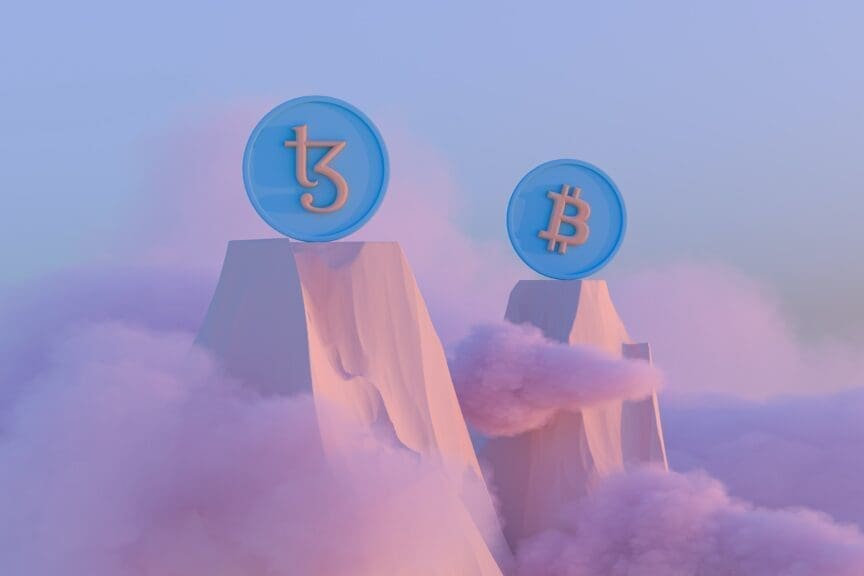Every now and then the ‘next thing’ comes along for investors and a lot of it is just inter-generational change.
‘NFT’ is the next new thing to come along; and suddenly people who are into crypto are dinosaurs! Before crypto people with an appetite for risk invested in tech stocks and we had the Tech Boom of the 1990s. The generation before that favoured FX trading and other derivative products and before them it was a mix of trading gold and mining stocks.
They all have the same common features: high-risk speculative investments promising a huge gain in the long run rather than income along the way. The important thing to remember, according to Dr Steve Enticott, is that you should “really understand the risk, and that’s usually leverage.”1
What is ‘leverage’? Simply said, it’s using borrowed money to increase the size of an investment you can make and therefore increase the potential return if your investment is successful. The risk is if your investment is not successful you still need to repay the debt, and probably interest, and you no longer have the money you borrowed.
Most people have used forms of financial leveraging at some point in their lives because borrowing money from a bank to buy property with the aim of that property increasing in value is, of course, leveraging. It’s all the same investing mechanics: just a different label.
What are NFTs?
‘NFTs’ or Non-Fungible Tokens are essentially digital artworks which are sold and traded online leveraging their essential ‘uniqueness’ … which is embedded digitally using blockchain technology. Think of a favourite photo which you’ve seen on a social platform then emailed, forwarded on to friends etc. etc. etc. It’s that virtually infinite nature of electronic files which has driven the rise of digital photography but NFTs reverse that proposition by making each digital file (images, writings, songs) unique and therefore collectable, valuable.
Sales of arts and antiquities exceeded $US50b during 2020, despite the global COVID pandemic so there is certainly an appetite for collecting. In August 2021 the NFT marketplace Opensea reported $95 million in cryptocurrency transaction volumes in just two days.2 The founder of Twitter famously sold his first tweet as an NFT in an online auction for US$2.5m… yes, there is real money in virtual art.
Buying and selling NFTs on platforms like Opensea is a popular, global, 24/7 online art auction tapping into peoples’ desire to own collectible items, into the attraction of online shopping and into a surplus of cash swishing around in the First World due to record low interest rates, cancelled plans and locked-down lives.
The Great Crypto Crash of ‘22
In May 2022 a digital platform called Celsius with 1.7 million customers suspended all transactions as crypto markets crashed. Just the month before, regulators had questioned whether Celsius’ business model (paying interest up to 18 per cent to holders of cryptocurrencies which it then on-lent at 20 per cent) was really just a traditional securities lending business rather than a brave new world of virtual currency transactions.
Celsius chief executive Alex Mashinsky denied the claims “even if it sounded like the same model for every moneylending business for the past 3,000 years.”3
Terra Nullius
Terra is/was a stablecoin which at its peak was valued at around $US40 billion. A stablecoin is a cryptocurrency pegged to a stable real-world currency, such as the US dollar. In what Forbes magazine described as “one of the largest wealth-destroying events in crypto history, we witnessed the horrific unravelling of the Terra ecosystem.”4
In theory every stablecoin is backed or ‘pegged’ by an actual dollar and can be freely redeemed, one-for-one, and this hybrid virtual/real currency was the attraction. But the ‘death-spiral’ for Terra began on the 7th of May with a withdrawal of US$150m soon followed by a US$350m sale by a supposed “attacker” that caused significant imbalance in the currency pool… triggering a ‘run on the bank’ with users rushing to pull out their funds: or ‘swap out’.
Another clear historical analogy which just reinforces what Dr Steve says in his Tickr TV episode1: there’s nothing new about crypto, or NFTs. They’re just a high-risk investment strategy for a new generation.
- Dr Steve’s episode on Tickr TV: https://youtu.be/jSEtOUkvdLA
- https://artbasel.com/about/initiatives/the-art-market
- ABC news: https://www.abc.net.au/news/2022-06-27/why-the-crypto-crash-could-hit-stocks/101185248
- Forbes: https://www.forbes.com/sites/rahulrai/2022/05/17/the-death-spiral-how-terras-algorithmic-stablecoin-came-crashing-down/?sh=3cb77e7a71a2
Photo by Tezos from Unsplash


